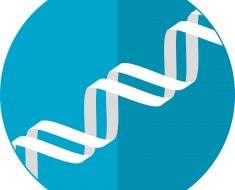Heart disease is a term referring to a range of heart health issues. These include:
- coronary artery disease
- arrhythmias
- heart failure
- angina
- other heart-related irregularities, infections, and birth abnormalities
According to the American Heart Association (AHA), heart disease affects more than 1 in 3 men in the United States.
In some cases, a person may have evident signs of heart disease that are easily recognizable. It is possible, however, to develop heart disease without experiencing any noticeable symptoms.
Read on to discover some of the common signs and symptoms of heart disease in men.
Are symptoms different in men and women?

Men and women share many of the same symptoms for heart disease and heart attacks.
However, men are more likely to experience the well-known heart attack symptoms such as:
- crushing chest pain
- squeezing, discomfort, or fullness in the chest
- pain in the arm, jaw, or back
- shortness of breath
- cold sweat
- nausea
Women are less likely to experience crushing chest pain. They have a higher chance of having the following symptoms instead:
- pain in the jaw, neck, or chest
- feeling faint or lightheaded
- squeezing on the upper back
- fullness, pressure, or squeezing in the center of the chest
As a result, women are more likely to ignore their cardiac symptoms as it is less obvious that they relate specifically to the heart.

Diagnosing heart disease often begins with a physical examination.
During the examination, a doctor will discuss any symptoms that a person is experiencing and any risk factors they may have for developing heart disease.
After assessing a patient’s physical health, symptoms, and risk factors, a doctor may run several diagnostic tests to determine if a person has any form of heart disease.
Many doctors will order a stress test that looks at how the person and heart respond to moderate exercise. A doctor will monitor a person as they walk or run on a treadmill to gauge whether or not they are likely to have narrowing of the blood vessels.
A doctor may also use an MRI scan to check for blockages that could be causing a restriction in blood flow.
If they confirm a blockage, the doctor will need to determine its exact location. The method for this is invasive but should not be painful.
A cardiologist will use a long, thin tube to insert a dye into the blood vessels of the heart, in a procedure called cardiac catheterization. A radiologist will then take a series of X-ray images of the heart and arteries, called an angiogram.

There are several lifestyle changes that men can make to help reduce their risk of developing heart disease or having a heart attack.
Some potential lifestyle changes include:
- quitting smoking
- exercising three or more times per week
- eating a diet low in processed sugars
- increasing the amount of fiber, vegetables, and fruit in the diet
- lowering salt consumption
- reducing stress through meditation or yoga
- establishing a baseline of health through regular checkups to help identify problems earlier
- being aware of snoring as a potential sign of heart disease
- maintaining a healthy weight

Takeaway
Heart disease is a leading cause of death for both men and women, though they may experience different signs and symptoms. It is important for people to familiarize themselves with the signs and symptoms most likely for their sex.
Every adult should also schedule regular visits to their doctor to establish baseline health metrics against which it will be possible to identify changes that may signal heart disease.
There are many lifestyle changes that men can make to help prevent heart disease and avoid a heart attack. There are also treatments available for heart disease before it becomes a problem and during and after a heart attack.
If a person suspects that they are having a heart attack, it is vital to call 911 immediately to get emergency medical help.
Source: Read Full Article





